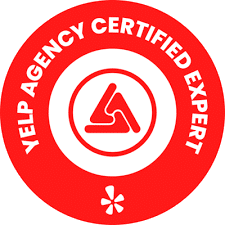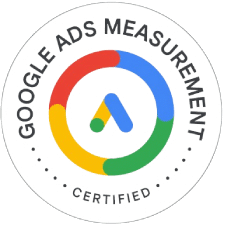HVAC marketing and HVAC website design are essential for any HVAC business that wants to succeed in today’s competitive market. A well-designed HVAC website can help companies establish their brand, showcase their HVAC services, and generate leads. On the other hand, a well-executed HVAC marketing strategy can help HVAC businesses nearby attract new customers and retain existing ones.
In the competitive HVAC industry, having a well-designed website is crucial for attracting more customers and establishing a robust online presence. This article explores essential aspects of effective HVAC website design, incorporating industry-specific features and marketing strategies to enhance visibility and engagement.
A successful HVAC company can use several other HVAC advertising and marketing strategies, such as marketing and search engine optimization (SEO), to reach its target audiences. HVAC businesses can also use branding and positioning to differentiate themselves from competitors and create a unique identity. Furthermore, customer relationship management (CRM) can help an HVAC company to build long-term customer relationships and improve customer satisfaction.
When it comes to HVAC website design, there are several essential elements: responsiveness, user-friendliness, and persuasive calls to action. HVAC businesses should also use performance analytics to measure the effectiveness of their HVAC website and marketing campaigns
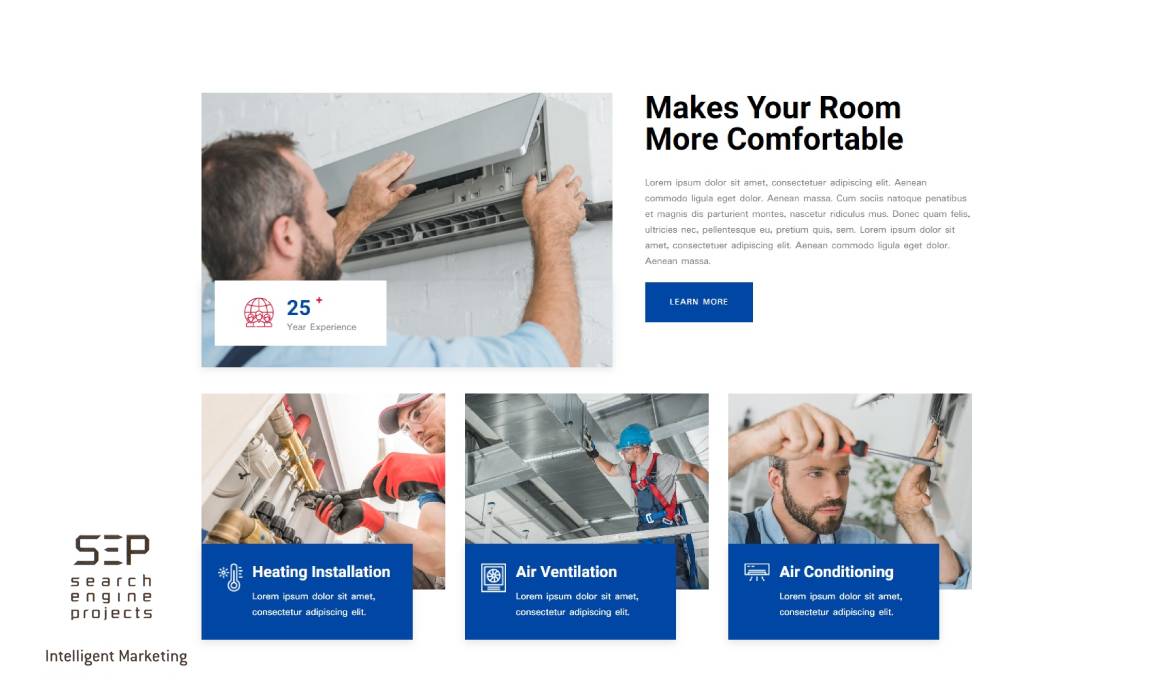
Key Features of an Effective HVAC Website
-
1. User-Centric HVAC Website Design: The design of your HVAC site should focus on the needs and expectations of potential customers. This includes easy navigation, fast load times, and clear information about services like heating and air conditioning repairs or HVAC system installations.
2. Strong Call to Action for HVAC Website Design: Every page should have a clear call to action (CTA) that invites users to schedule a service, request a quote, or make a phone call. Effective CTAs can significantly increase the conversion rate, turning visitors into leads.
3. Mobile Optimization: With the increasing prevalence of mobile searches, having a mobile version of your HVAC website that is responsive and easy to navigate is essential. Mobile optimization ensures users have a positive experience, regardless of their device.
4. SEO Strategies: To boost visibility on Google and other search engines, your HVAC website should employ SEO strategies tailored to local searches. This includes optimizing for keywords like “AC repair,” “furnace repair,” and “HVAC contractors,” as well as ensuring your Google Business Profile is up-to-date to appear in organic listings and Google Local Services ads.
5. Content Marketing: High-quality content that provides value to your target audience can attract more visitors and establish your HVAC company as an industry authority. This could include blog posts on HVAC maintenance tips, energy efficiency guides, or the latest trends in HVAC technology.
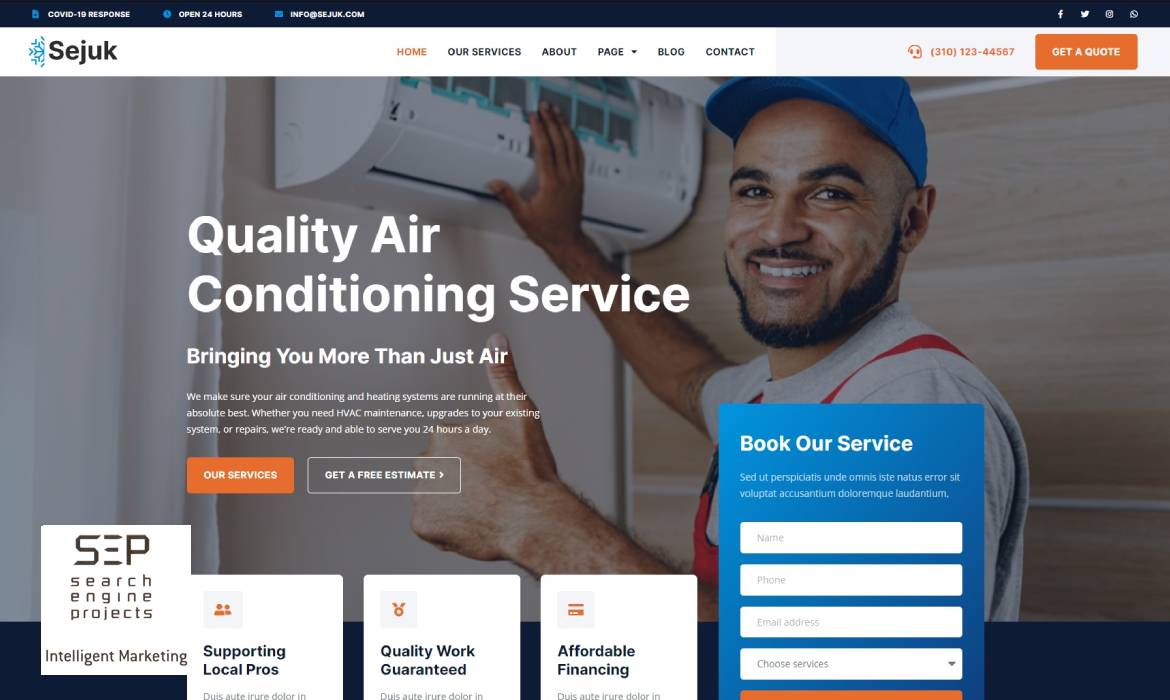
Marketing Strategies for HVAC Websites
1. Google Local Service Ads: These ads are crucial for HVAC companies looking to attract new customers. They appear at the top of Google search results, providing high visibility and a direct link to your website or contact methods.
2. Customer Reviews and Testimonials: Positive client reviews and testimonials can influence potential customers to choose your HVAC service over others. Featuring these prominently on your site builds trust and credibility.
3. Social Proof and Community Engagement: Highlighting your involvement with local charities or community events can resonate with potential clients who value community-oriented businesses. This not only enhances your brand image but also strengthens your local network.
4. Email Marketing: Reaching out to current and potential customers through email marketing lets you inform them about special offers, new services, and tips for maintaining their HVAC systems. It’s a direct channel to stay connected and encourage repeat business.
5. Web Presence Beyond Your HVAC Website: To complement your website, consider expanding your web presence through directory listings, networking events, and active engagement on social media platforms. This multi-channel approach helps reach a broader audience and drive traffic to your website.
Best Practices and Tools for Good HVAC Website
1. Google Analytics: Integrating Google Analytics into your HVAC website provides insights into your traffic, user behavior, and the effectiveness of your marketing efforts. This data is crucial for making informed decisions that enhance your web strategy.
2. Web Design Tools: Utilizing reliable web design tools or platforms can help create an aesthetically pleasing and functional website. Popular choices include WordPress, Wix, and Squarespace, each offering unique features tailored to different needs.
3. Professional HVAC Marketing Agency: Partnering with a marketing agency that specializes in the HVAC industry can provide access to expert knowledge and resources that optimize your online marketing strategies, from SEO to paid advertising.
HVAC makes data-driven decisions and improves performance by analyzing website traffic, bounce, and conversion rate from their HVAC Website.
- A well-executed HVAC marketing strategy can help businesses attract and retain new customers.
- A well-designed HVAC website can help companies establish their brand, showcase their HVAC services, and generate leads.
- Performance analytics can help companies measure their website’s and marketing campaigns’ effectiveness and make data-driven decisions to improve their overall performance.
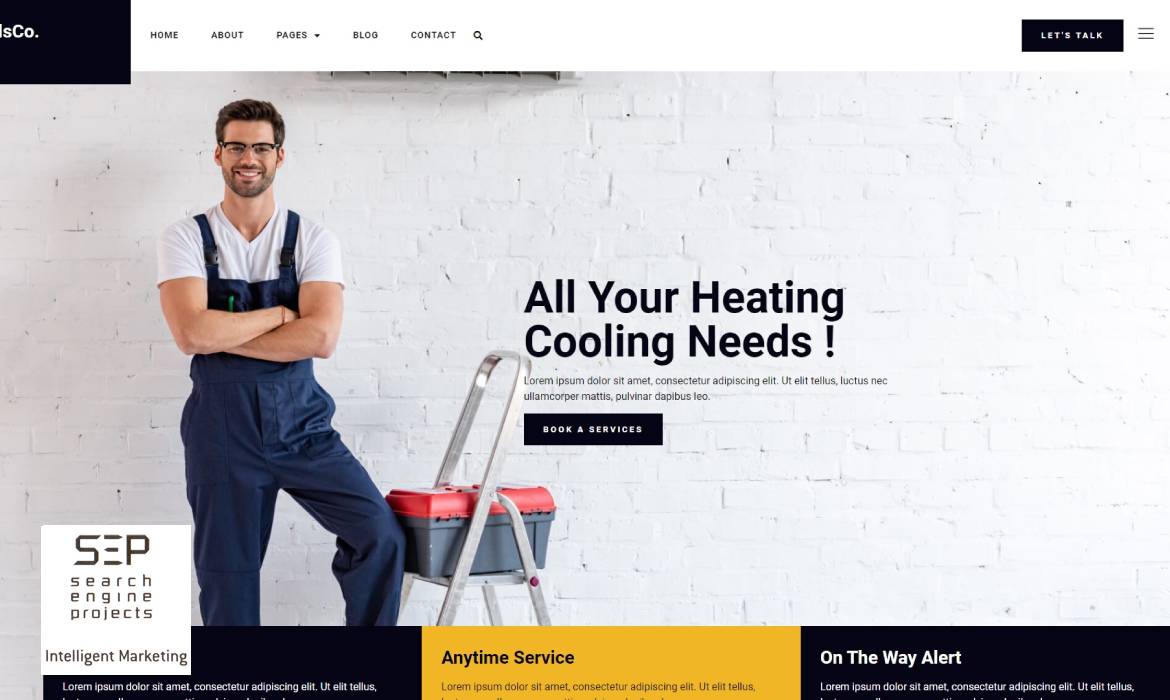
HVAC Marketing Strategies
When marketing stem or business, several strategies can be employed to generate leads and increase sales. Here are some of the most effective HVAC marketing strategies:
Search Engine Optimization
The Search engine optimization process helps your HVAC website receive more traffic and generate leads by optimizing an HVAC website for other search engines and relevant keywords.
To optimize an HVAC website, create high-quality content with relevant keywords. This can include blog posts, HVAC service pages, and other content related to the HVAC industry or service area.
Pay-Per-Click Advertising
Pay-per-click online advertising, where businesses pay for each click on their ads. This can effectively generate leads for an HVAC business, as companies can target specific keywords and demographics to reach their ideal customers.
To create a successful PPC campaign for people to search for an HVAC company, businesses should create high-quality ads optimized for relevant keywords and demographics. They should also focus on creating landing pages that are optimized for conversions.
Social Media Engagement
Social media engagement is engaging with customers and prospects on social media platforms like Facebook, Twitter, and Instagram. HVAC businesses can build relationships with their audience and generate more leads by engaging with customers and prospects on social media.
To engage with a potential customer on social media, HVAC businesses should create high-quality content relevant to their audience, such as blog posts, videos, online reviews, and other content related to HVAC. They should also focus on responding to comments and messages promptly to build relationships with their audience.
HVAC Website Essentials
Creating an HVAC website is one of the most critical steps in your HVAC site marketing. A well-designed HVAC website optimized for desktop and mobile can help attract new customers, showcase your brand, and increase your online visibility. Here are some HVAC website essentials you should consider:
User-Friendly HVAC Website Design
A user-friendly HVAC website design is crucial to attract and retain visitors. A clean and appealing web design with easy navigation can help visitors quickly find what they want. Consider using high-quality images and videos to showcase your services and products. Ensure your website is easy to navigate, with clear calls-to-action (CTAs) and contact information.
Mobile Optimization
With more and more consumers using their mobile devices to browse the internet, it’s essential to have a mobile-optimized HVAC website. A mobile-optimized website ensures that your website is easy to read and navigate on a smaller screen. It also helps improve your website’s search engine rankings since Google prioritizes mobile-friendly websites. Please consider using responsive design to ensure your HVAC website adapts to different screen sizes.
Content Quality
High-quality content is essential for any HVAC website. Your website’s content should be informative, engaging, and relevant to your target audience. Consider creating blog posts, videos, and infographics that provide valuable information about your services or products. Use keywords and phrases your target audience will likely search for to improve your website’s search engine rankings. Make sure your content is up-to-date and accurate.
By keeping these great HVAC website design essentials in mind, you can create a website that attracts and retains visitors, showcases your brand, and helps you stand out in a competitive market.
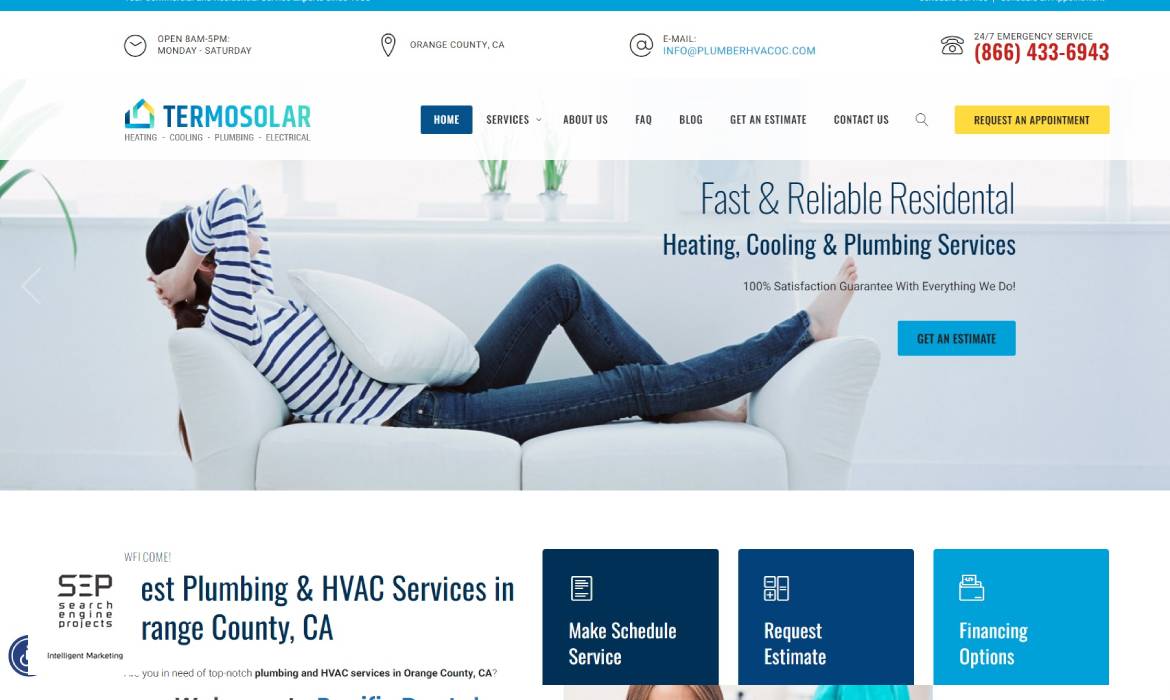
Branding and Positioning
A strong brand identity and a well-defined unique selling proposition (USP) are crucial for HVAC businesses to stand out in a crowded market. In this section, we will discuss the critical elements of branding and positioning that HVAC businesses should consider.
Logo and Tagline
A logo is the visual representation of a brand and plays a crucial role in creating a lasting impression on customers. HVAC businesses should invest in a well-designed logo that reflects their brand personality and values. The logo should be simple, memorable, and easily recognizable. It should also be scalable and work well across different mediums, including websites, business cards, and vehicles.
A tagline is a short phrase accompanying the logo and communicating the brand’s value proposition. HVAC businesses should craft a memorable, catchy tagline that conveys their unique selling proposition. The tagline should be clear and concise; ideally, it should be no more than seven words.
Unique Selling Proposition
A unique selling proposition (USP) is a statement that communicates the unique benefit that a business offers to its customers. HVAC businesses should define their USP and use it to differentiate themselves from their competitors. The USP should be clear, concise, and relevant to the target audience’s needs. It should also be backed up by evidence demonstrating the business’s ability to deliver on its promise.
Some examples of USPs for other HVAC businesses include:
- Same-day service guarantee
- 24/7 emergency service
- Free consultations and estimates
- Energy-efficient solutions
- Certified and licensed technicians
By developing a solid brand identity and a compelling USP, HVAC businesses can attract potential customers, retain current ones, and build a reputation as a trusted and reliable HVAC service provider.
Customer Relationship Management
Customer Relationship Management (CRM) is a crucial aspect of HVAC marketing. It involves managing customer interactions to improve the relationship and increase customer satisfaction. CRM helps HVAC businesses understand their customers’ needs and preferences, allowing them to provide personalized and responsive service.
Email Marketing
Email marketing is a popular CRM tool that HVAC businesses can use to keep in touch with customers. It involves sending emails to customers with information about new services, promotions, and other relevant updates. Email marketing is an effective way to stay top-of-mind with customers and increase brand awareness.
When using email marketing, it’s essential to ensure that the emails are personalized and relevant to the customer. This can be achieved by segmenting the email list based on customer preferences and behavior. HVAC businesses can also use email marketing to collect customer feedback and improve their services.
Loyalty Programs
loyalty programs are another effective CRM tool that HVAC businesses can use to retain customers and increase customer satisfaction. Loyalty programs reward customers for their repeat business with discounts, free services, or other incentives.
When creating a loyalty program, it’s essential to ensure the rewards are attractive and relevant to the customer. HVAC businesses can also use loyalty programs to collect customer data and gain insights into happy customers’ behavior and preferences.
In summary, CRM is a crucial aspect of HVAC marketing that involves managing customer interactions to improve the relationship and increase customer satisfaction. Email marketing and loyalty programs are two practical CRM tools that HVAC businesses can use to stay top-of-mind with customers and increase brand awareness.
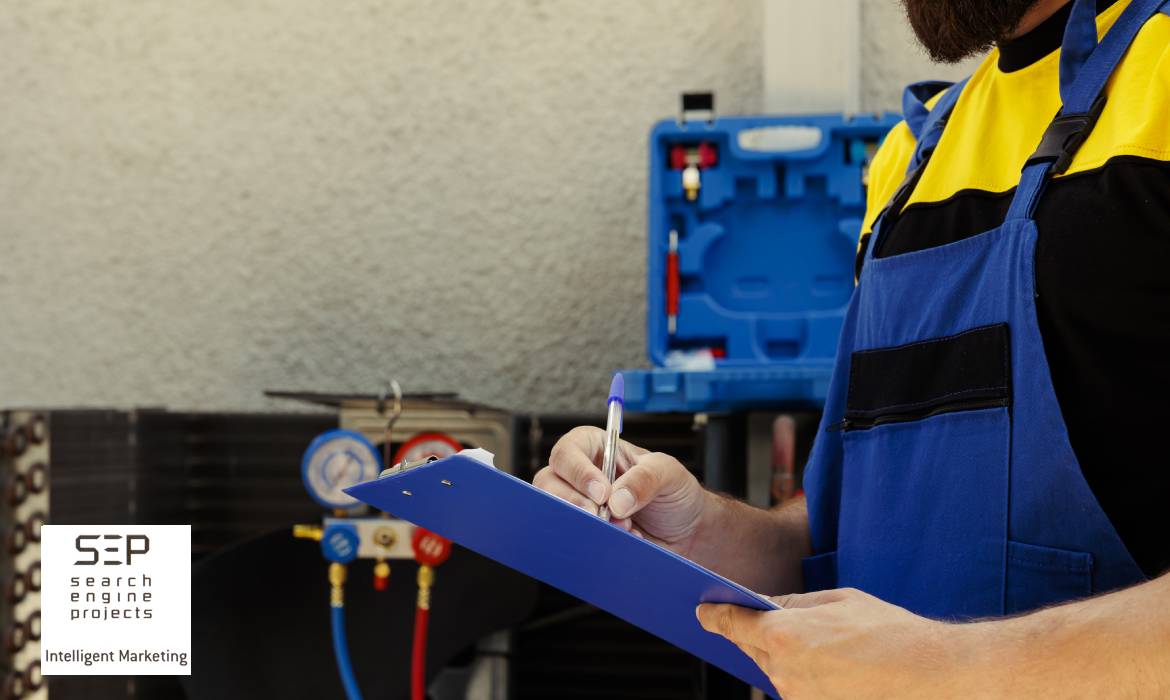
Performance Analytics
To ensure the success of an HVAC marketing campaign, it is essential to track and analyze its performance using various metrics. This section will discuss two critical aspects of performance analytics: Traffic Analysis and Conversion Tracking.
Traffic Analysis
Traffic analysis is monitoring website traffic to gain insights into how visitors interact with the website. The data collected from traffic analysis can help HVAC businesses understand how effectively their website attracts and engages visitors. It can also reveal areas that need improvement.
There are several metrics that HVAC businesses should track when analyzing website traffic. These include:
- Total Visits: The total number of visits to the website.
- Unique Visits: The number of unique visitors to the website.
- Bounce Rate: The percentage of visitors who leave the website after viewing only one page.
- Average Time on Site: Visitors spend on the website.
- Pages per Visit: The average number of pages visitors view during a single visit.
By tracking these metrics, HVAC companies can identify areas of their website that need improvement and make data-driven decisions to optimize their website for better performance.
Conversion Tracking
Conversion tracking monitors how visitors interact with a website and identifies actions that lead to conversions. Conversions are actions that HVAC companies want visitors to take, such as filling out a contact form or making a purchase.
There are several metrics that HVAC companies should track when analyzing conversion rates. These include:
- Conversion Rate: The percentage of visitors who complete a specific action on the website.
- Conversion Funnel: The series of steps visitors take to complete a conversion.
- Cost per Conversion: The amount spent on advertising per conversion.
By tracking these metrics, HVAC companies can identify areas of their website that need improvement and make data-driven decisions to optimize their website for better conversion rates.
Frequently Asked Questions
What are effective strategies for advertising an HVAC business online?
Advertising an HVAC business online requires a targeted and strategic approach. Some effective strategies include creating an HVAC website optimized for search engines, using social media platforms to engage with customers and promote services, and investing in paid advertising such as Google Ads or Facebook Ads. Another effective strategy is to create informative and helpful content that provides value to potential customers, such as blog posts or videos that explain common HVAC problems and solutions.
What features should a high-performing HVAC website include?
A high-performing HVAC contractor should include straightforward and easy-to-use navigation features and a responsive design that looks good on all devices. This prominent call-to-action encourages website visitors to contact the business and informative content that educates visitors about HVAC services and solutions. It should also be optimized for search engines with relevant keywords, meta tags, and descriptions.
How can HVAC companies increase their client base through digital marketing?
HVAC companies can increase their client base through digital marketing by implementing a comprehensive strategy that includes SEO, social media marketing, email marketing, and paid advertising. By creating a solid online web presence and engaging with potential customers on various platforms, HVAC companies can build brand awareness and establish themselves as trusted experts in the industry.
What are the latest trends in HVAC marketing for 2024?
Some of the latest trends in HVAC marketing for 2024 include an increased focus on local search optimization, using chatbots and other AI-powered tools to improve customer service and engage more customers, and integrating virtual and augmented reality technologies to enhance the customer experience. Other trends include video marketing and influencer partnerships to reach new audiences.
How much should an HVAC company budget for marketing efforts?
The amount that an HVAC company should budget for marketing efforts depends on various factors, such as the size of the business, the target market, and the specific marketing goals of the cooling company. However, as a general rule, HVAC companies should allocate around 5-10% of their revenue towards marketing efforts.
What role do marketing agencies play in the success of HVAC businesses?
Marketing agencies can play a crucial role in the success of HVAC businesses by providing expertise in SEO, social networking events, media marketing, paid advertising, and other HVAC marketing ideas. By working with an HVAC marketing agency, HVAC businesses can benefit from a comprehensive and customized marketing strategy designed to meet their specific needs and goals.
Are you looking for more clients for the HVAC services that you Offer?
A well-designed HVAC website is more than just an online brochure; it’s a vital tool for attracting new customers, serving current customers, and building a reputable HVAC business. By focusing on user experience, mobile optimization, SEO, and effective marketing strategies, you can create a web presence that looks good and performs well in driving business growth.
If you are looking for HVAC marketing that works, you can contact Search Engine Projects.


